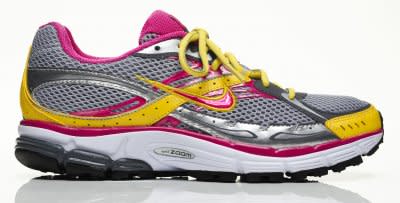4 Tips for Treating Shin Splints

Erin Kurdyla, SELF magazine
Nothing slows a runner down like the nagging pain of shin splints. Ouch! Soothe the aches of your sore shins with a few helpful tips and stretches from Ann Bruck, ACE-personal trainer and registered yoga teacher of The Sports Club/LA-Boston.
Shin Splints Solutions:
1.Wear proper fitting shoes: Choosing a shoe that is suited for you foot type based on gait, cushion, arch support, fit and sport will help decrease the risk of injury. Also, be sure to change your shoes every 3-6 months or every 500 miles.
2.Ice the affected area: Once you feel the achiness in the front of your legs apply ice 4-6 times a day for approximately 15 minutes to decrease inflammation of the shins. Be sure to protect the skin by placing a cloth or wrap between the skin and ice.
3. Active rest: Rather than avoiding physical activity all together, try non-impact exercise such as biking or swimming.
Related: Six Scientifically Proven Stretches
4.Stretch: Tight calf muscles are contributing factor when it comes to shin pain. Stretch your calves, with these great moves below to loosen up your muscles.

The Stretch: Toes up, Heels down
Benefit: to strengthen the anterior tibialis (front portion of lower leg)
What you need: a sturdy wall or door you can lean against
How to perform: To strengthen the anterior tibialis, stand with your heels at the wall. Place the left heel at the same distance as the right toes and then place the right foot to be in line with the left. Slowly lean back so the buttocks and shoulders are against the wall. From here, gently lift the toes toward your shins (dorsiflexion). Hold this for a count of 5 and then slowly release the toes to the floor. Repeat this 10-15 times. As you begin to build up strength, you can increase your holding count t to build endurance and strength.
Safety concerns: Make sure to lean against a sturdy wall or surface area and lower toes to the floor if pain is present.
The Stretch: Calf Stretch (for gastrocnemius and soleus muscles)
Benefit: Stretching your calf muscles help decrease the pain of those suffering from shin splints.
You'll Need: A sturdy wall or door you can push against with your upper body.
See Also: 3 More Ways to Soothe Achy Muscles

How to do It: To stretch the gastrocnemius, which is the bigger of the two muscles, stand facing a wall with one foot about a shoulder's width in front of the other. Keep your back leg, the one you are stretching, straight and a slight bend in your front knee. Push against the wall with your hands until you feel a stretch through your back calf.

To stretch the soleus, you can stay at the wall. Keep the same stance you started with for the 1st stretch. In order to reach the soleus, you must place a slight bend in the back knee. This will help relax the gastrocnemius and stretch the soleus. Try to stay upright in the bent-knee position with both heels on the floor. Hold each of these stretches for 30 seconds, with 3 sets on each.
Safety concerns: Use a sturdy or stable wall to push against. Keep front knee over the ankle.
More from SELF:
• Yoga Moves for Flat Abs
• Simple Vegetarian Meals
• Gwyneth Paltrow's Arm and Abs Workout
• Superfoods for Weight Loss
• Healthiest Grocery Store Lunches
